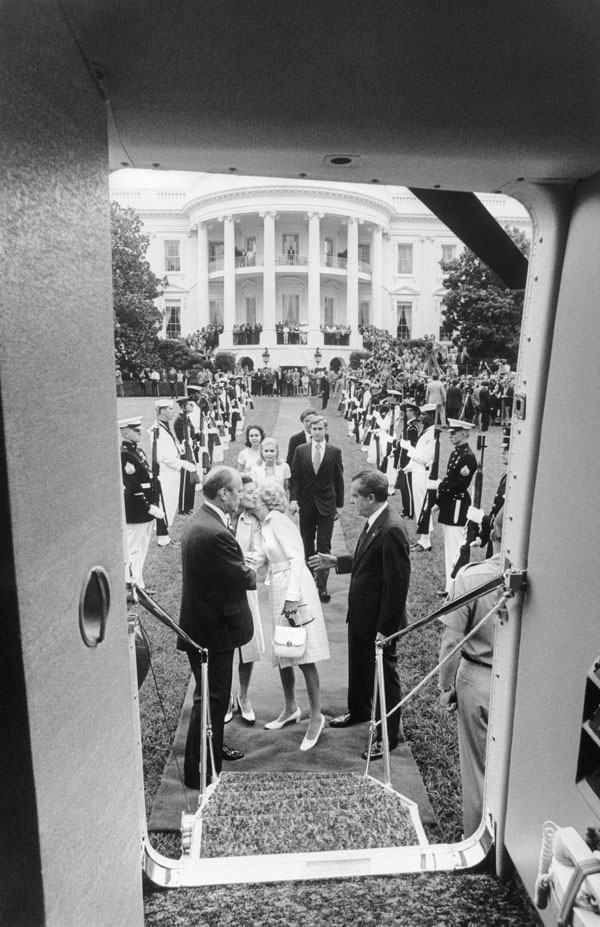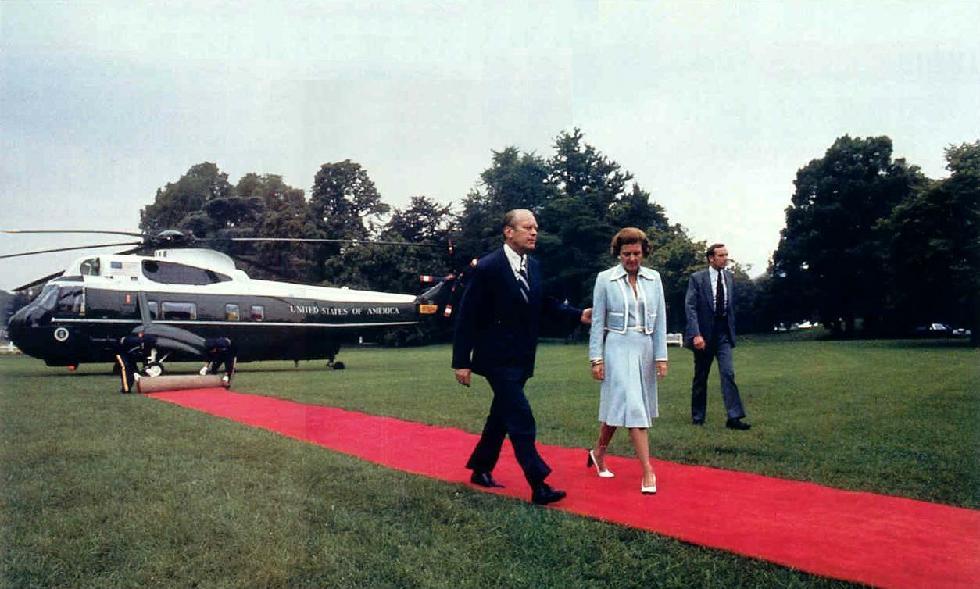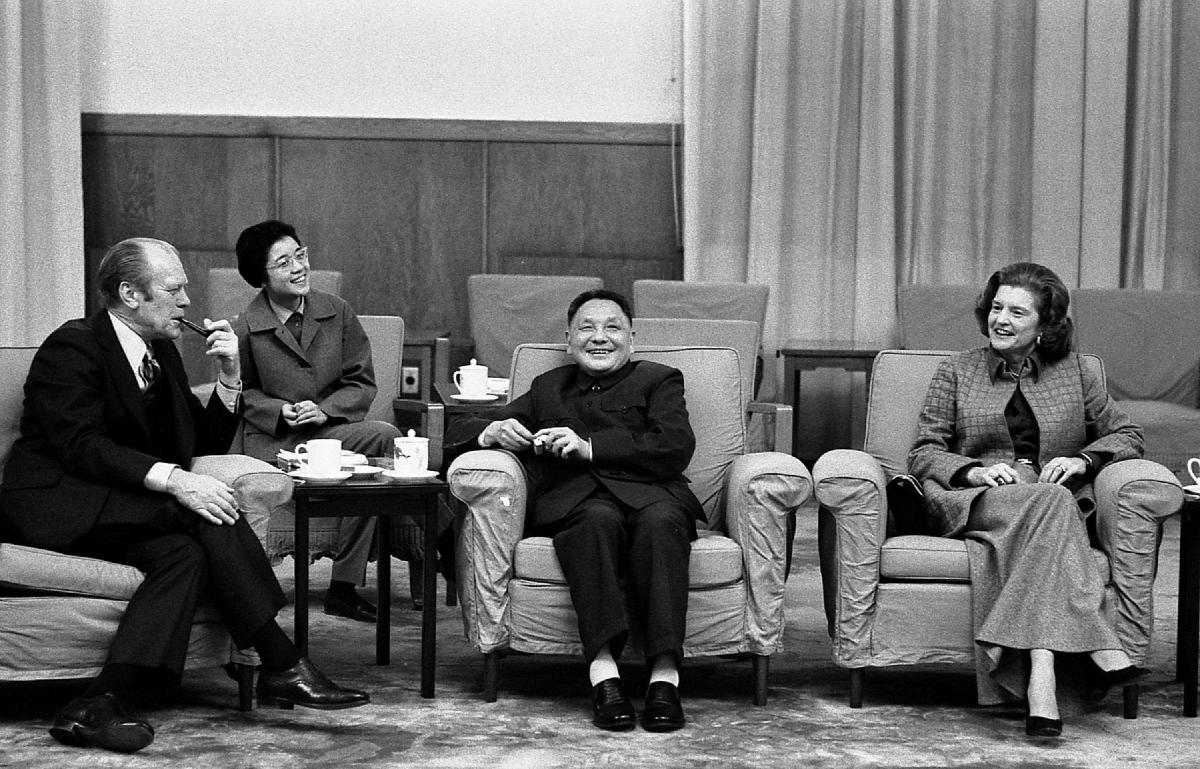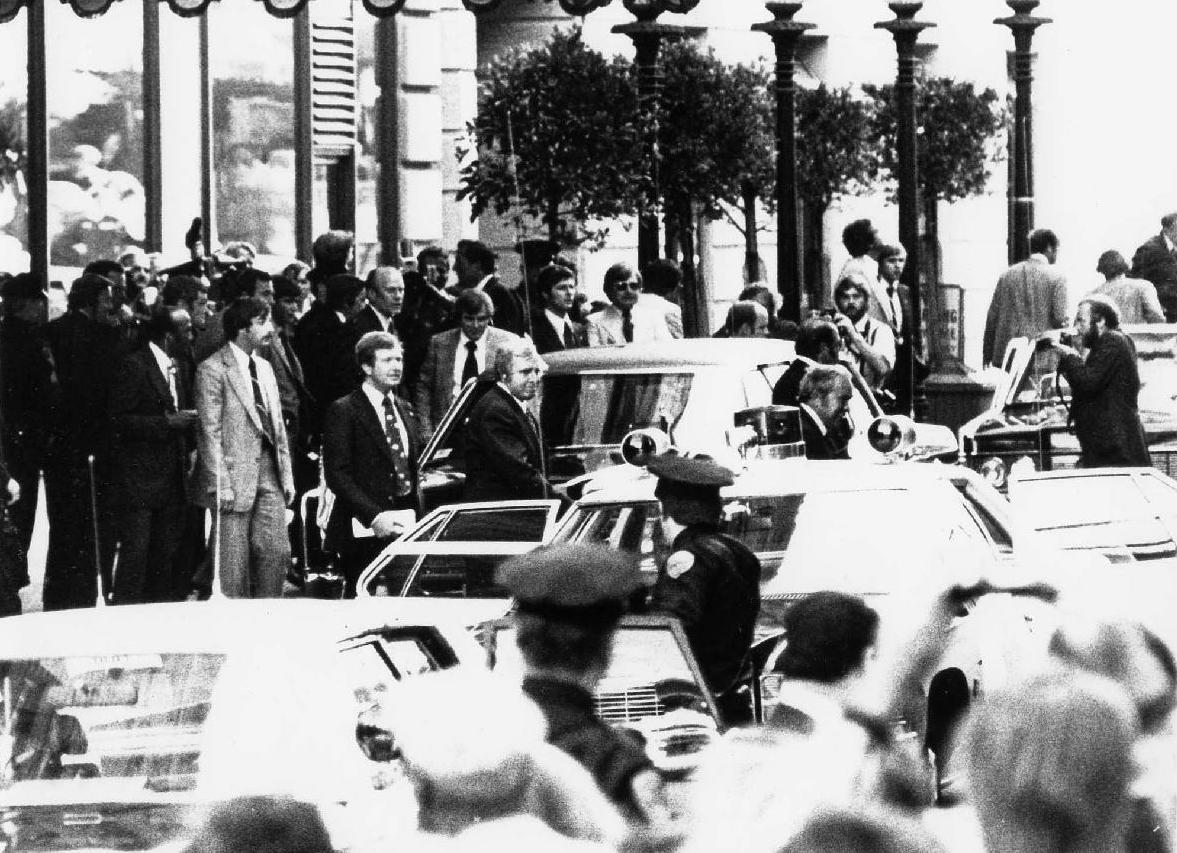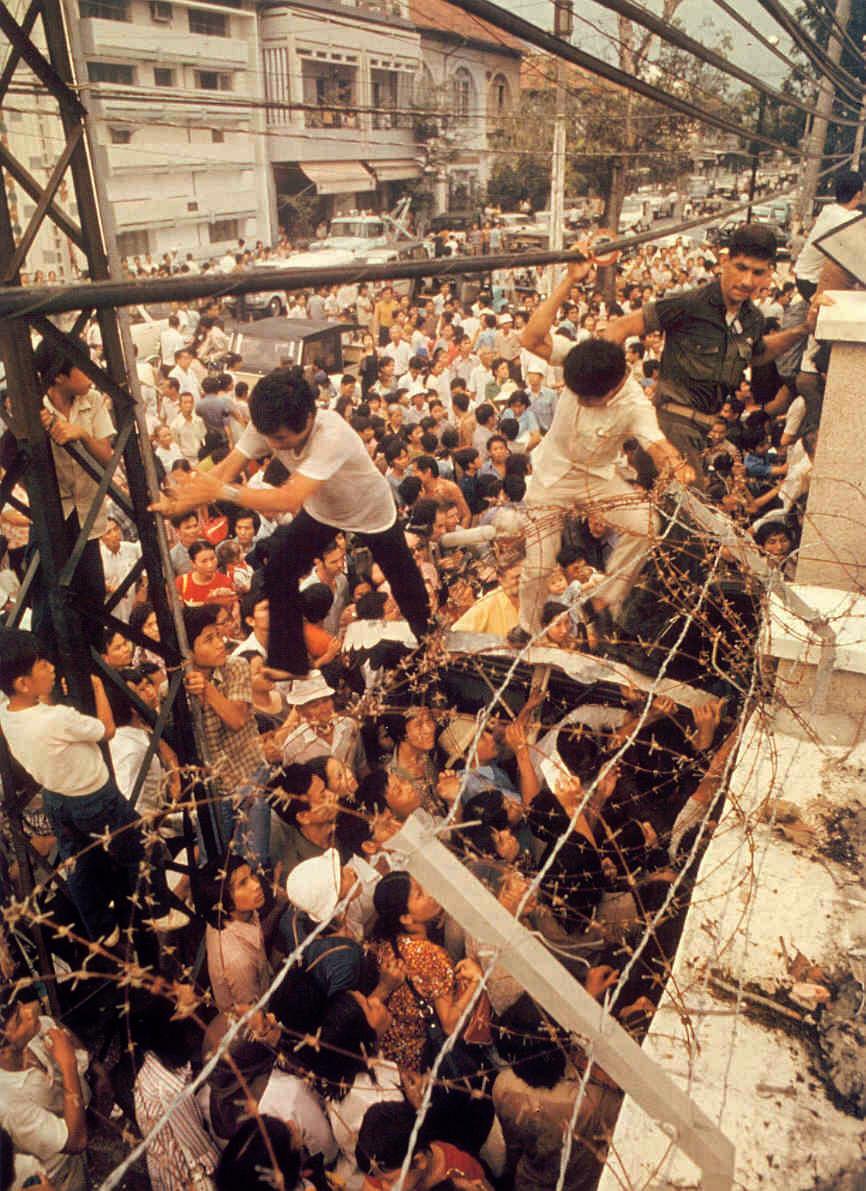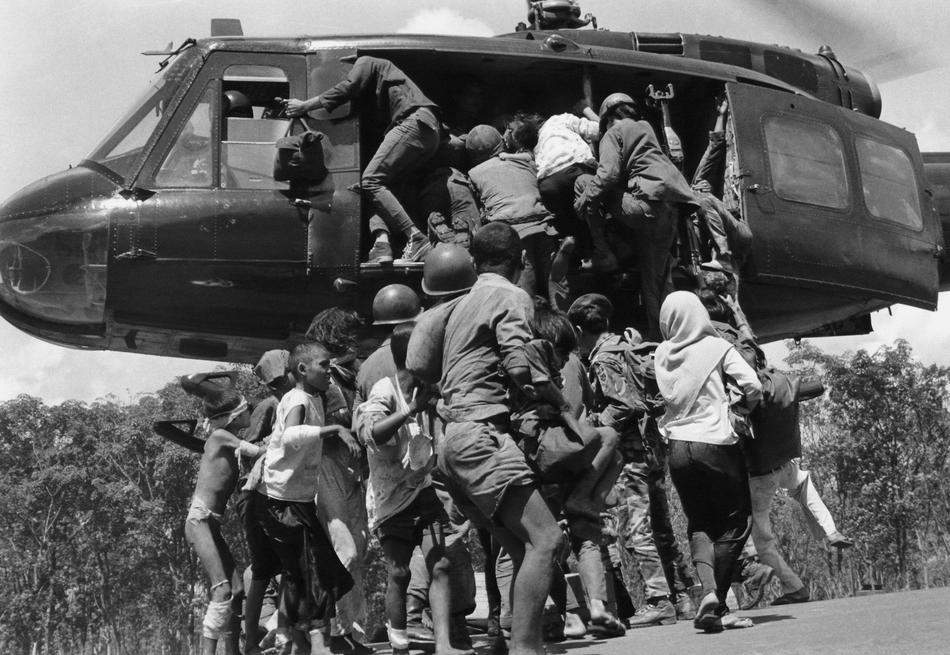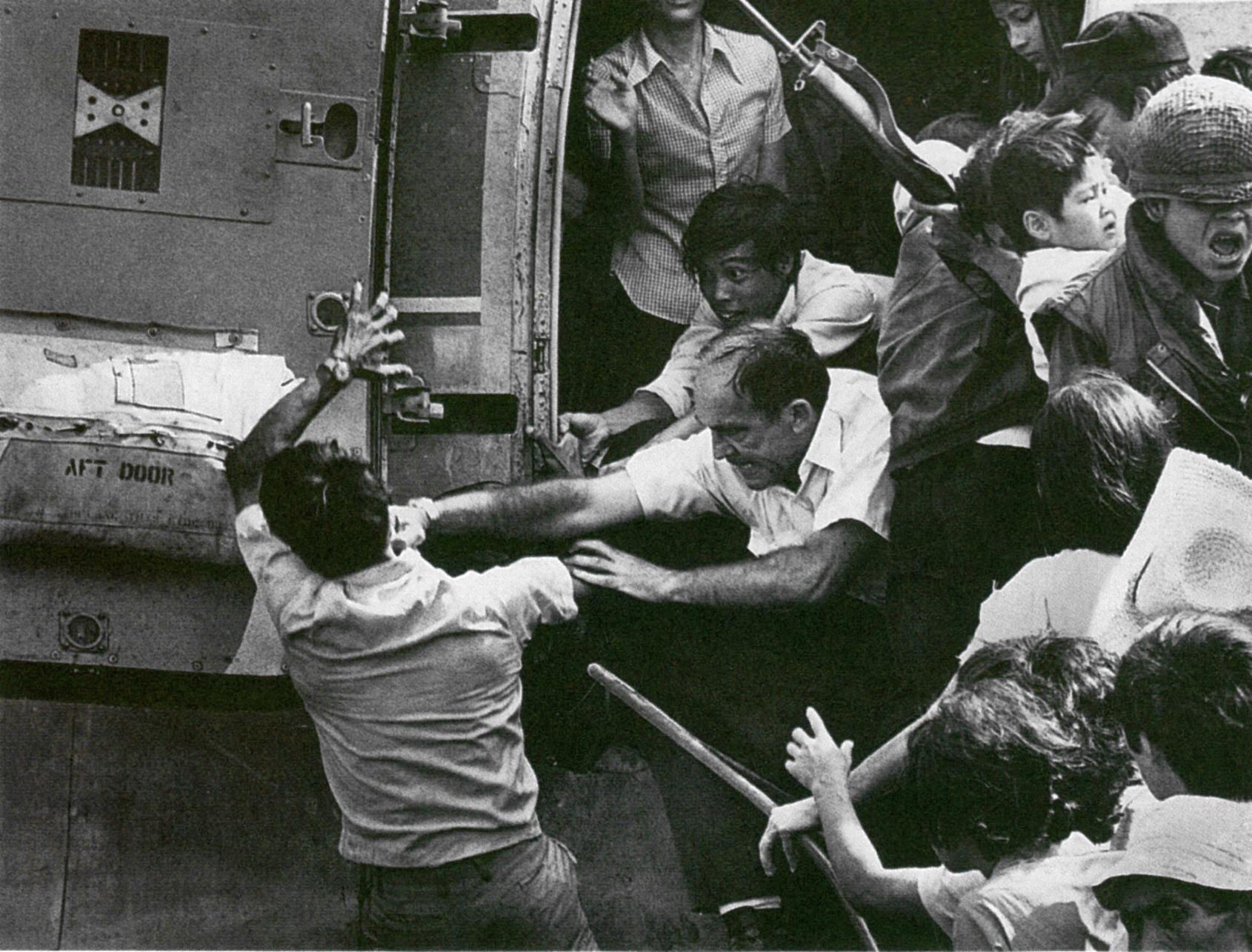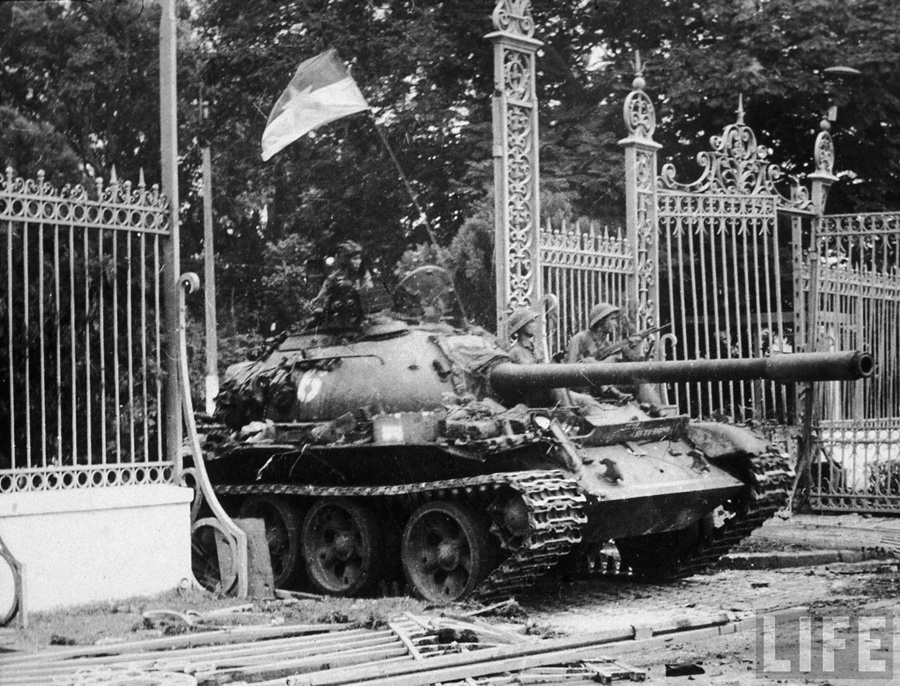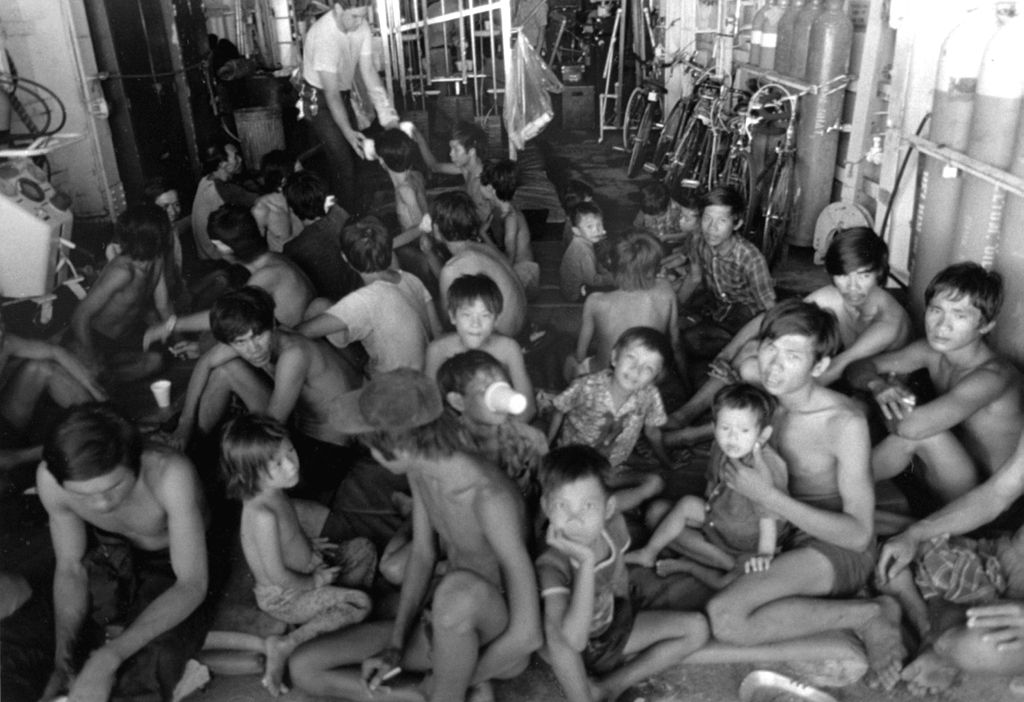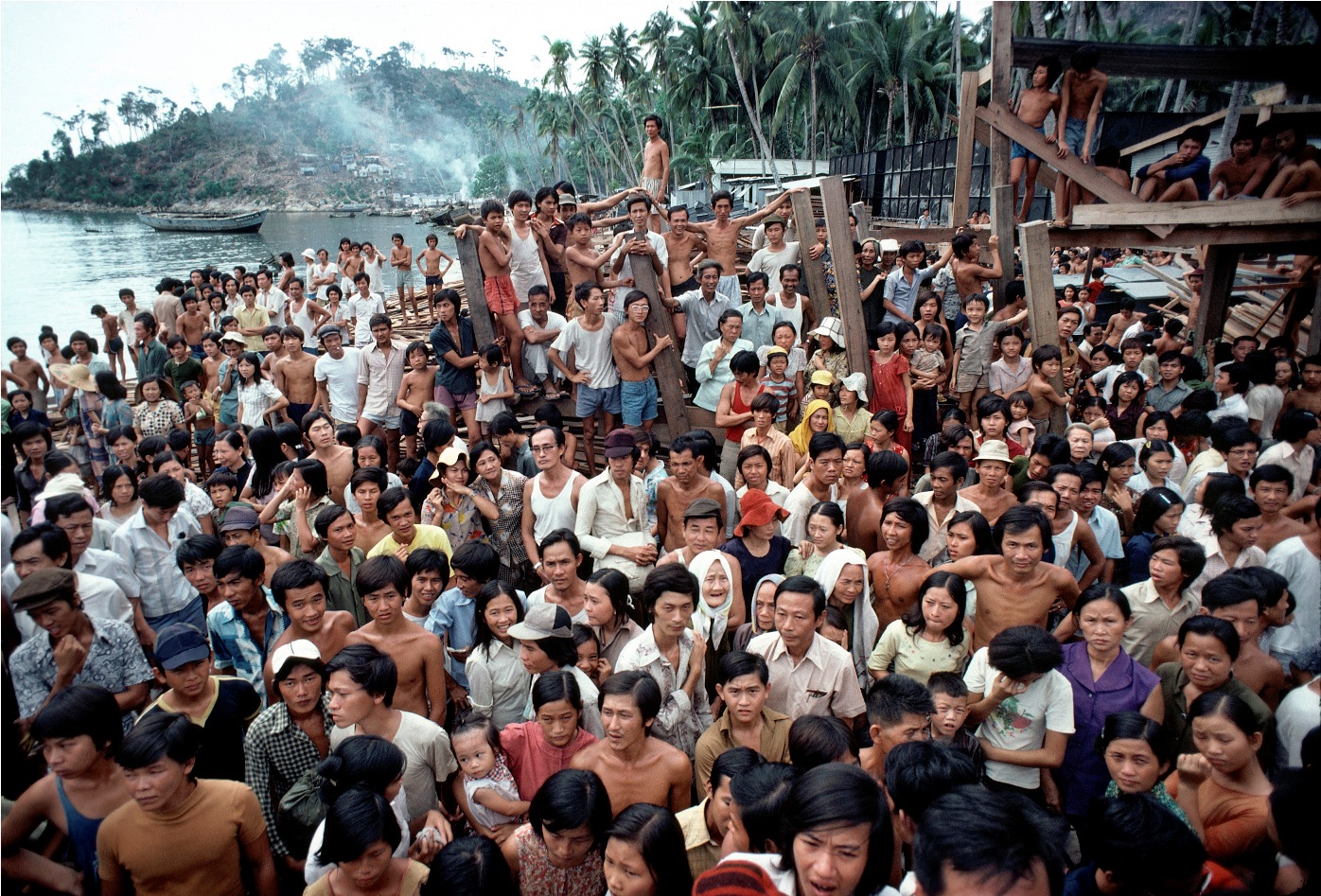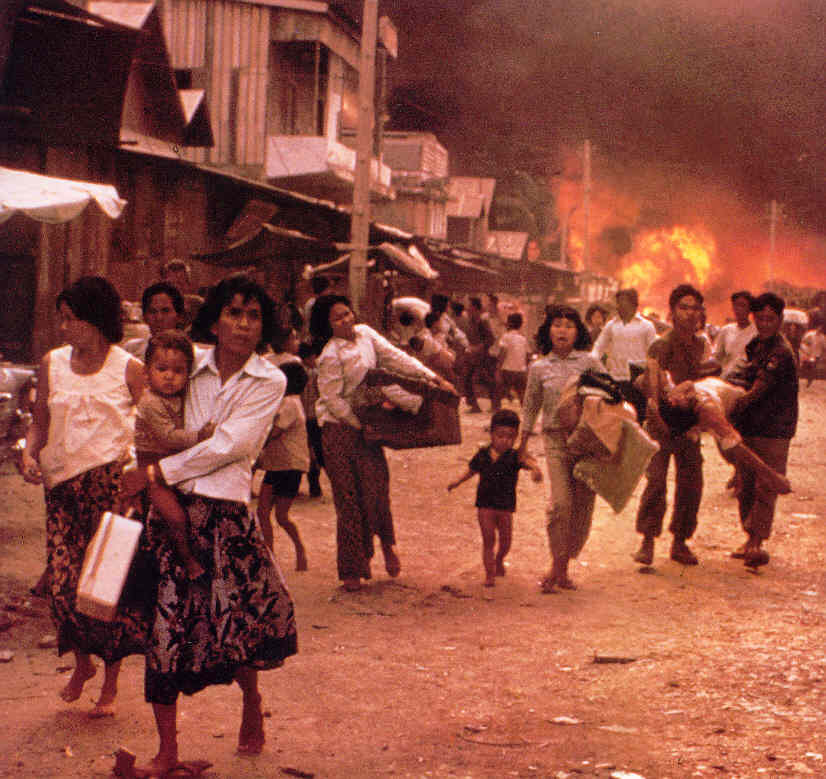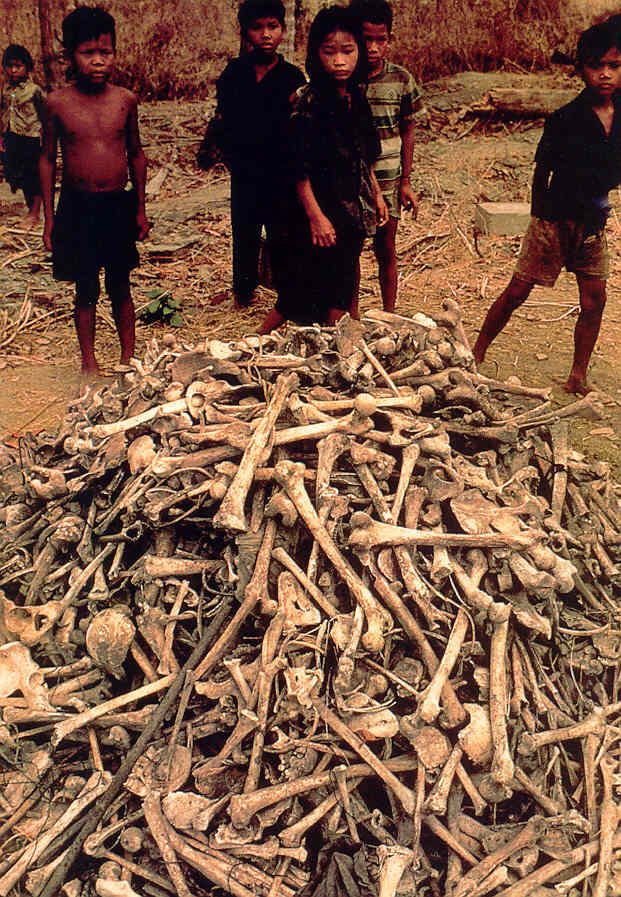23. THE TROUBLED 1970s

THE POST-NIXON CATASTROPHE

THE POST-NIXON CATASTROPHE
 Nixon's resignation ... and Ford's
Nixon's resignation ... and Ford'sassumption of the Presidency
 The horrifying political collapse of South
The horrifying political collapse of South
Vietnam
 The Cambodian "Killing Fields"
The Cambodian "Killing Fields"
 Evaluating the collapse of a political
Evaluating the collapse of a political
status quo
The textual material on this webpage is drawn directly from my work
America – The Covenant Nation © 2021, Volume Two, pages 235-238.
NIXON'S RESIGNATION ... AND FORD'S ASSUMPTION OF THE PRESIDENCY |
|
Meanwhile, by early August of 1974 it was quite apparent that a Congressional impeachment was certain to be forthcoming no matter what Nixon did to save his presidency. Furthermore, fellow Republicans sensed that the anti-Nixon mood whipped up by Congress and the press would also sweep Republican Congressmen from office in the coming 1976 elections. They pleaded with Nixon to simply step down, and step away from this political mess. Thus on August 8th, Nixon resigned ahead of this much-anticipated trial of the President. Vice President Gerald Ford now stepped up to become America's new president. But Nixon was still liable to civil suits against him now that he was out of the White House. However, Ford sacrificed his political career to extend a presidential pardon to Nixon, to avoid putting the nation through a nasty political show-trial that Nixon's political enemies were looking forward to. The latter were furious that Ford had let Nixon get away unchastened. In any case, Congress was not in the mood to want to cooperate with the new American president, convinced that by curtailing the powers of the White House they had just delivered America from dangerous tyranny. What the Democratic Congress was unwilling to understand was how greatly they had weakened American power by crippling the office of the American president – and the American power that much of the world depended on politically, economically, and even morally. They were about to see the results of their "democratizing" of American foreign policy … though certainly also they would refuse to take serious note of the lessons that the results of their actions should have taught them. Instead, they congratulated themselves proudly for what they had just done to save American democracy from presidential imperialism. And they would see to it that, in the writing of the historical narrative presented in the nation's schools and universities to rising generations of young Americans, the world would continue to celebrate this momentous event when Congress saved America from the evil president, Richard Nixon. From their point of view this would play ideologically much better than having to acknowledge what were the real consequences of Congress's anti-imperialism (or just anti-Nixon) crusade, ironically inspired by America's great moral leader, Ted Kennedy. Because the real consequences of this great Congressional moral crusade did not take place in America itself (which mostly just left the country stunned), but instead in far-off Southeast Asia.
|
|
April 1974: Nixon is ordered by Jaworski to turn over 69 more tapes to investigators – ones dating from soon after the break-in. Nixon refuses, claiming executive privilege. By mid-summer polls revealed that a majority of Americans believed that Nixon was involved in the cover-up. July 24: the Supreme Court sustains a lower court decision that Nixon must turn over the subpoenaed tapes. July 27: the Committee votes 27-11 to recommend a House impeachment vote and subsequent Senate trial on the basis of three articles of impeachment: obstruction of justice, abuse of power, and contempt of Congress Senior Republicans in Congress visit Nixon to inform him that they see no way he will survive a full House vote recommending impeachment – or a Senate trial August 5: Nixon surrenders three key tapes and admits that he had known of the break-in a few days after the event and had tried to block the FBI investigation into the event. |
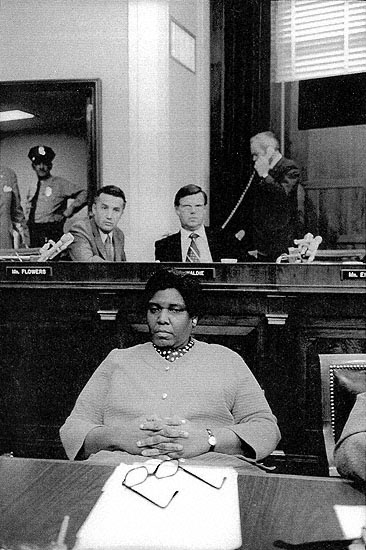 U.S. Rep.
Barbara Jordan (Dem – Texas)
– July 1974
U.S. Rep.
Barbara Jordan (Dem – Texas)
– July 1974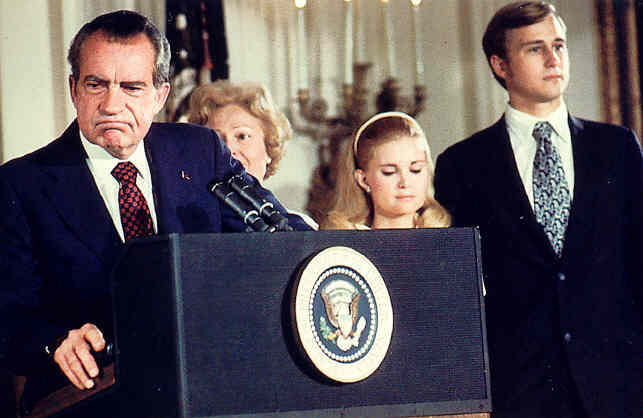
Richard Nixon announces his
resignation – August 9, 1974
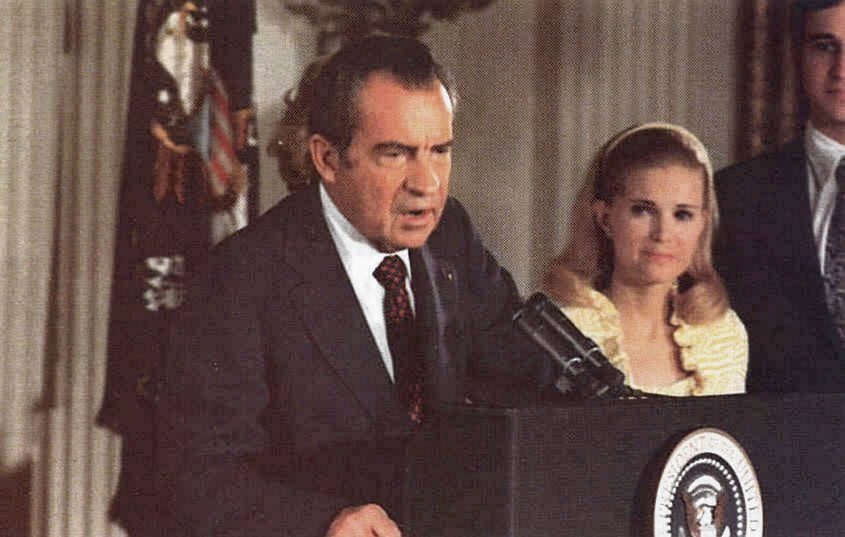
Richard Nixon departs from
the White House before Gerald Ford was sworn in as President

Ford's first steps toward
his new duties as President – August 9, 1974
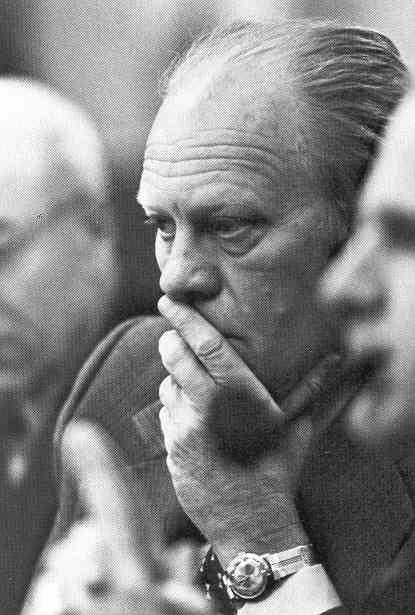
Gerald R. Ford – President 1974-1977. Ford attempts to carry forward Nixon's high diplomatic legacy abroad
President and Mrs. Ford,
Vice Premier Deng Xiao Ping, and Deng’s interpreter
have a cordial chat during
an informal meeting in Beijing, China – 1975
But the Liberal Left was not in a mood to see Nixon's legacy survive under any terms ... no matter what it would cost not only America but even the larger world. That cost will eventually run high ... very high
Reaction to (2nd) assassination
attempt on President Ford – by Sara Jane More, September 22, 1975. Reaction of Secret Service
agents, police, and bystanders approximately one second after
Sara Jane Moore attempted
to assassinate President Gerald R. Ford.
THE HORRIFYING POLITICAL COLLAPSE OF SOUTH VIETNAM |
|
Since the "anti-imperialist" Congressional cutback in American financial support for the pro-American Saigon government, the situation in South Vietnam worsened day by day. Finally, in early 1975 panic set in among the South Vietnamese soldiers who now understood that their cause was lost without further American aid – to offset the aid the Communist North was getting from Soviet Russia. And at the end of April the world was treated to the well-televised spectacle of the last of the American diplomatic mission beating a cowardly retreat from Saigon, with loyal Vietnamese civilians hanging on to the American helicopters in an effort to get out of the country with them. The Communists had completely routed mighty America in Vietnam. But this also meant that the political status quo in the entire region of Southeast Asia was going to suffer a huge shift. |
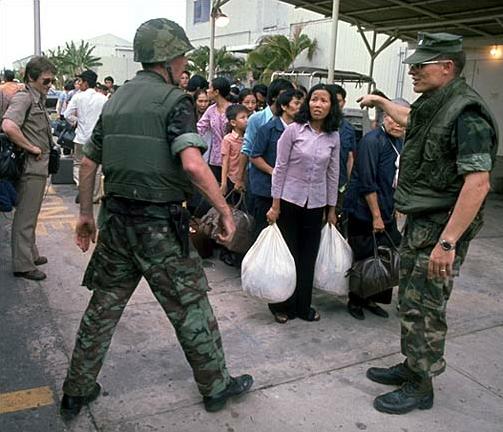
South Vietnamese seeking
escape out of Vietnam with American servicemen
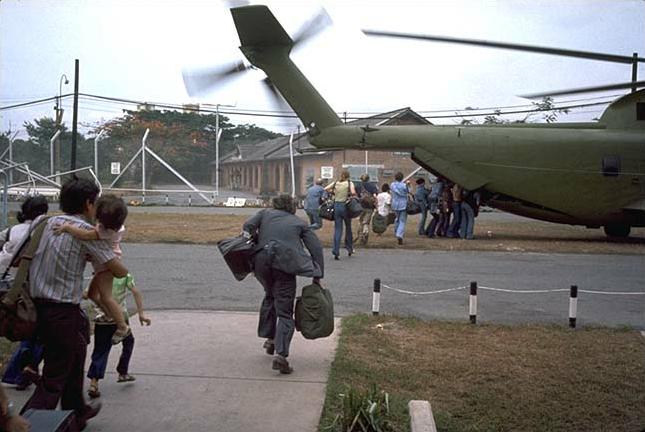
South Vietnamese and Americans
head for the helicopters out of Saigon
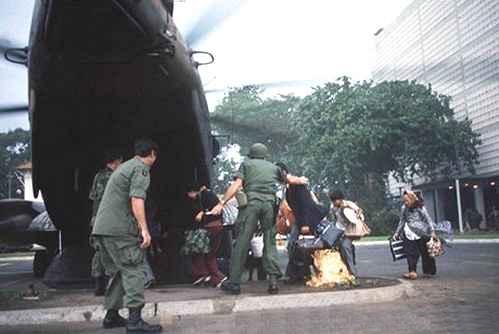
South Vietnamese heading
for the helicopters out of Saigon
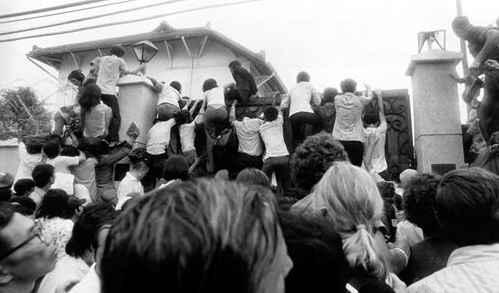
South Vietnamese and Americans trying to get into the American Embassy compound – April 29, 1975
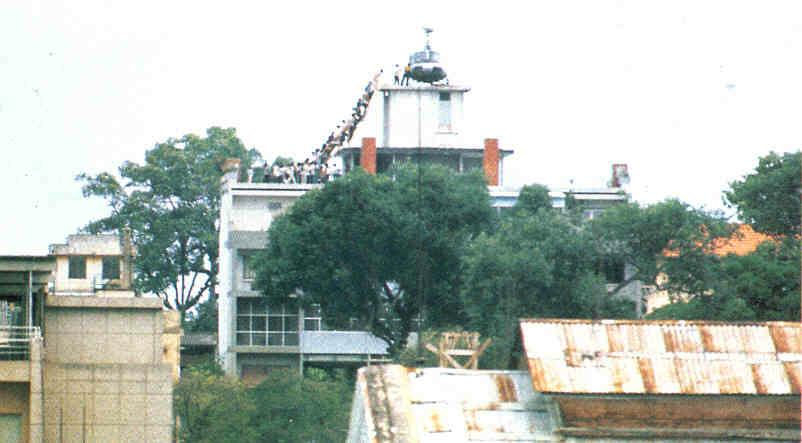
The Evacuation of Saigon from atop an apartment building housing CIA employees – April 29, 1975
Desperate Vietnamese trying
to escape Saigon with the departing Americans –
April 29, 1975
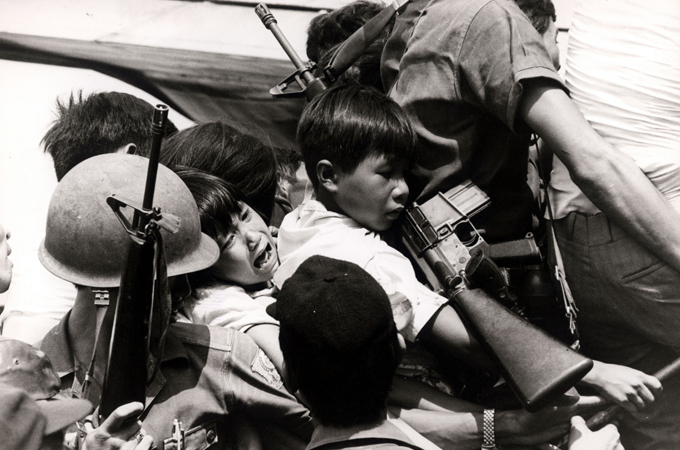
Vietnamese trying to escape Saigon
Fending off Vietnamese attempting
to flee Saigon ahead of the Communist takeover – 1975
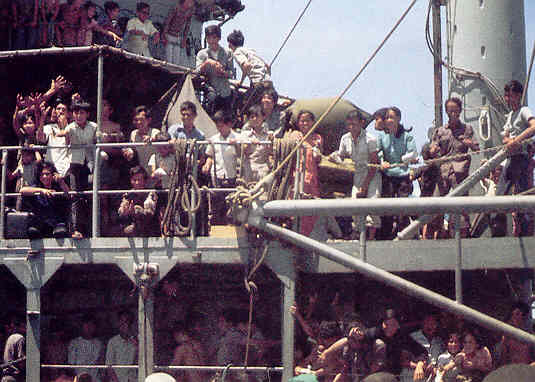
A North Vietnamese tank breaks through the gates of the Presidential Palace in Saigon – April 30, 1975
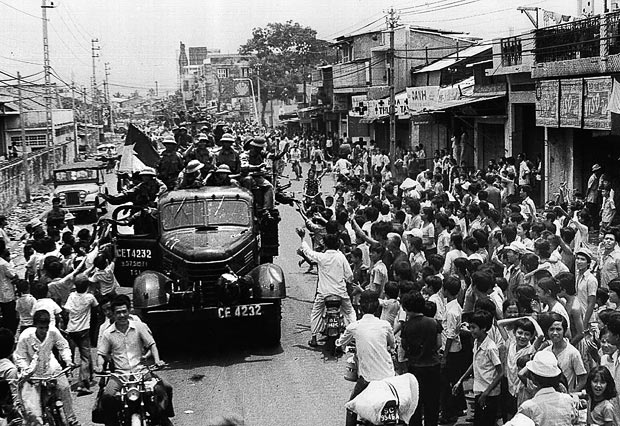
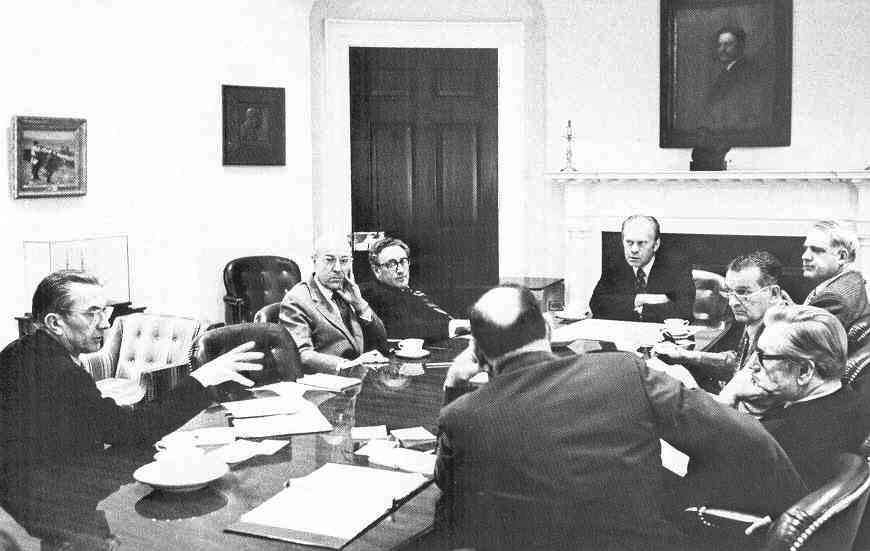
President Ford deliberates
with his National Security Council concerning the fall of Saigon in 1975
Following the fall of South
Vietnam
to the Communists, "re-education" camps were opened up to "retrain" the thinking of former
South Vietnamese soldiers and workers who had cooperated with
America.
But for the South Vietnamese themselves, the worst
was yet to come. A huge number (perhaps a million) of pro-Western South
Vietnamese were carted off to re-education camps, which were simply
concentration camps, where many died from the miserable conditions
found there. Also, the Communist authorities followed classic Communist
doctrine in collectivizing the peasant farms and Middle-Class
businesses, which had also the classic Socialist/Communist effect of
crippling horribly the country's economy.
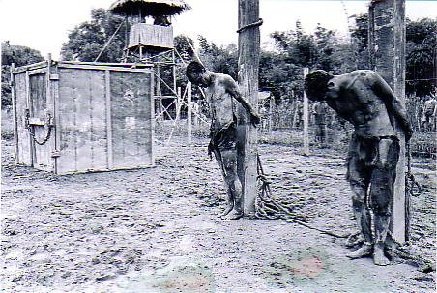
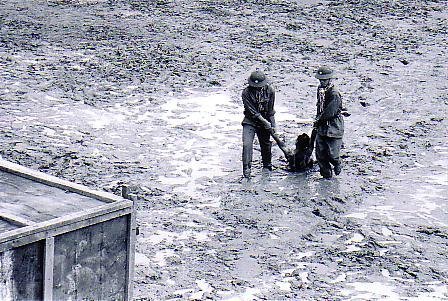
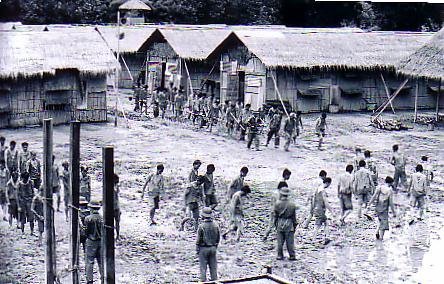
|
Millions of Vietnamese thus attempted to escape the country in overcrowded boats of all sizes and quality. By 1978-1979 that had become a humanitarian disaster of huge proportions, as many of the boats were sunk by bad weather or by simply the poor quality or overcrowding of the boats, or the "boat people" died of thirst, or were kidnaped and murdered or sold as slaves by pirates. Many were thankfully picked up by commercial vessels and brought to British Hong Kong. Others, able to reach countries such as Malaysia, Thailand or the Philippines, were usually put in internment camps where they sat for a very long time waiting for clearance to move on. Most of these, over 800,000, were eventually settled in the United States. Another quarter-million were settled in Europe or England's Commonwealth countries.
|
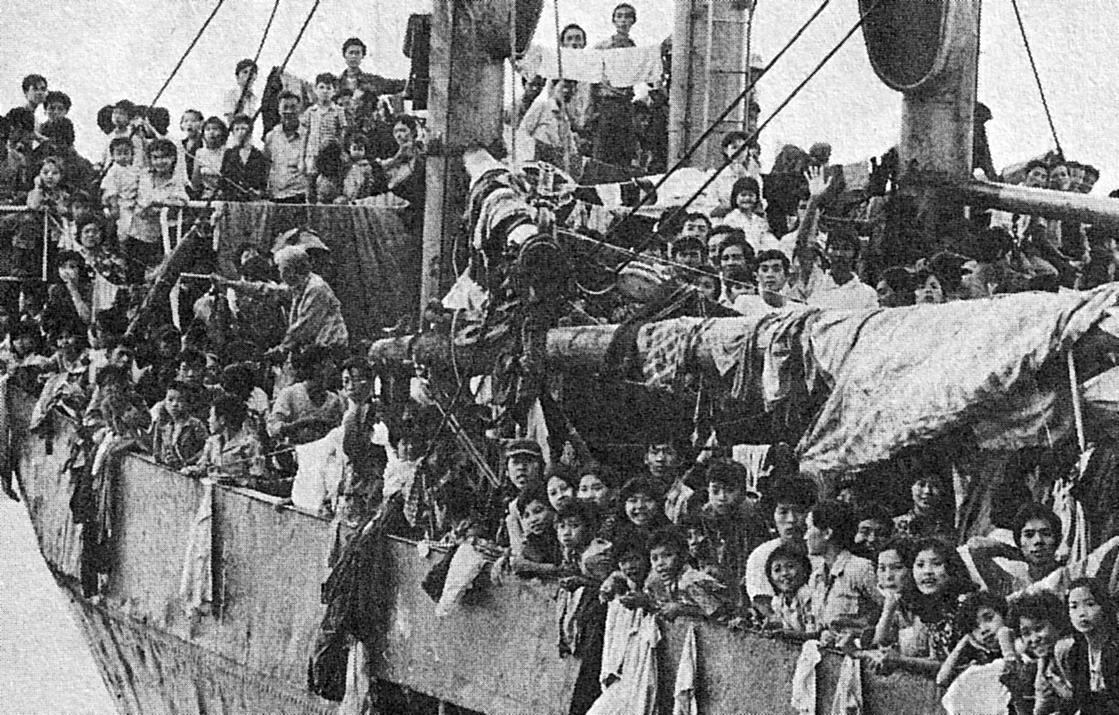
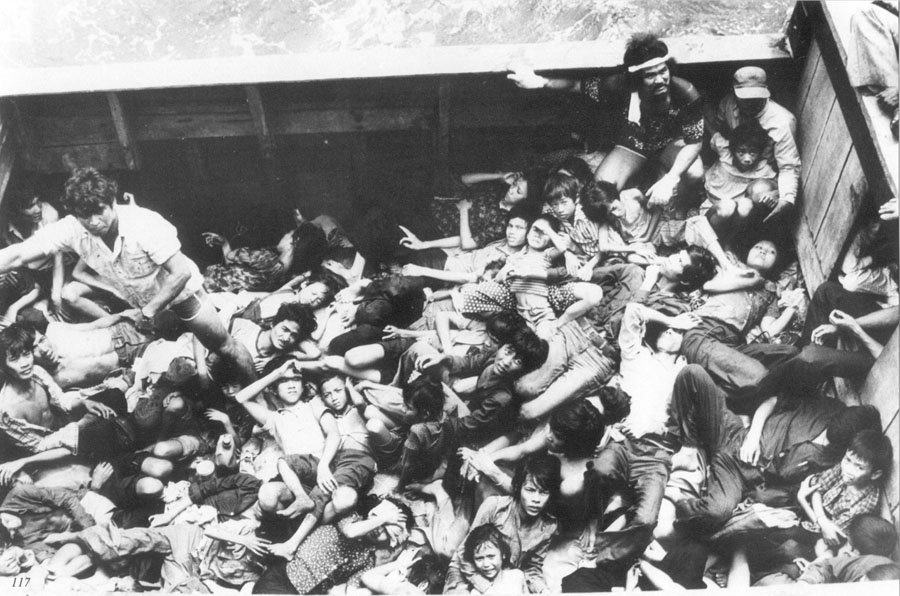
But so many of them did not make the journey successfully. Tragically, so many of them will die at sea.
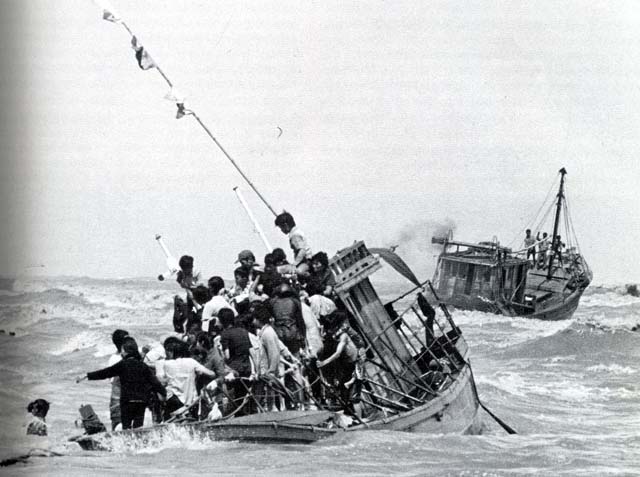
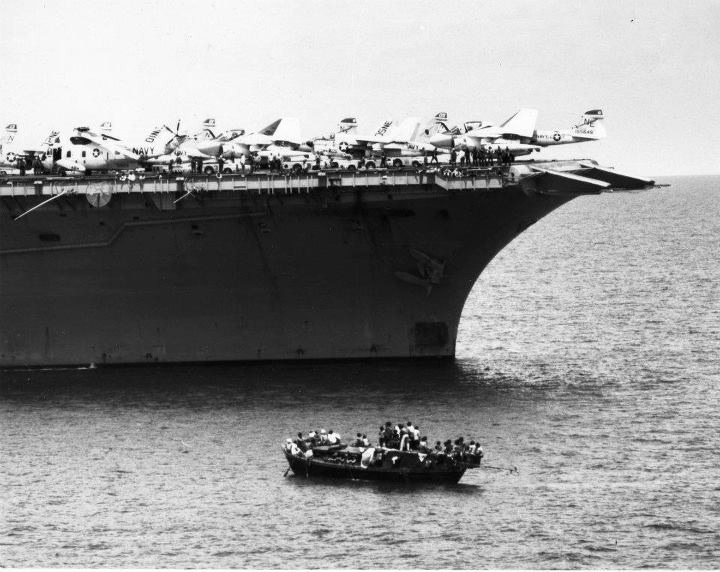 Some, however, will be
fortunate enough to be picked up by friendly ships
Some, however, will be
fortunate enough to be picked up by friendly ships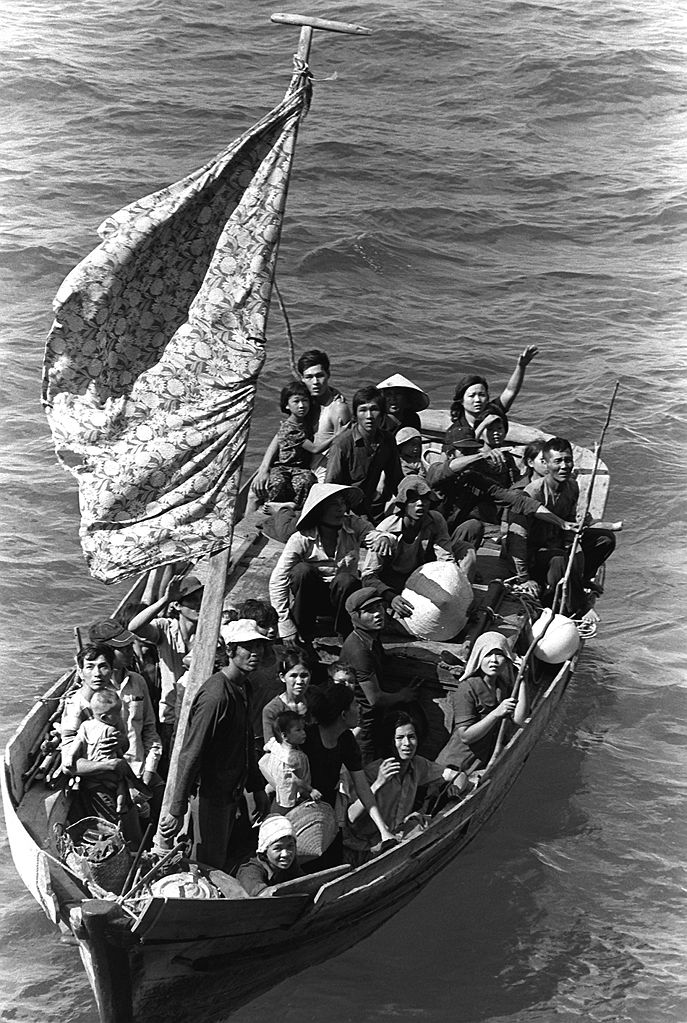
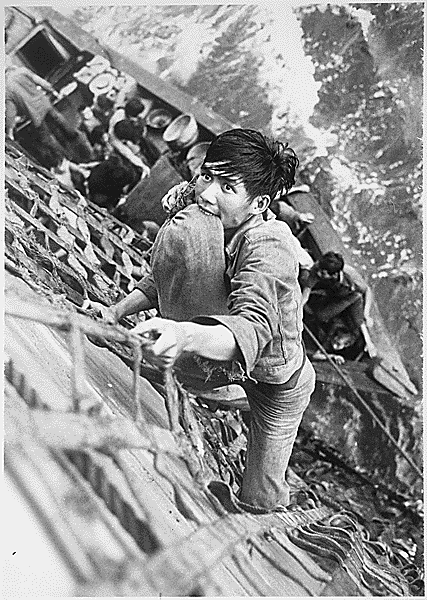
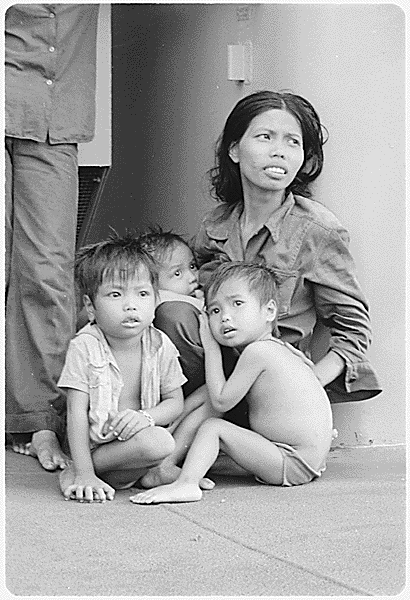
Vietnamese refugees rest as crewmen aboard the guided missile cruiser USS FOX (CG-33) give them something to drink – 1 June 1982
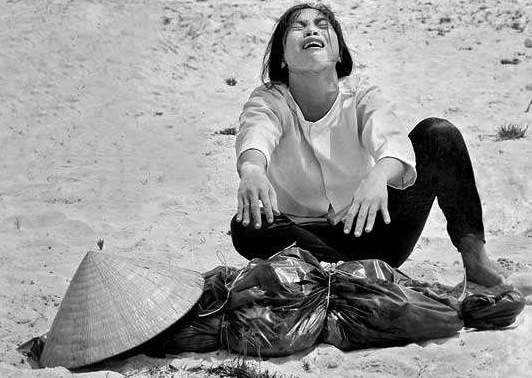
While Vietnamese were taking to the sea to escape Vietnam, many others fled overland to surrounding countries ... with similarly tragic results
Many made it to overcrowded refugee camps of neighboring countries ... such as the Pulau Bidong Island Camp in Malaysia where some 36,000 were located as of this 1979 photo.
THE "KILLING FIELDS" OF THE COMMUNIST KHMER ROUGE IN
CAMBODIA |
|
But next door, in Cambodia, the nightmare was even greater. With Congress's undercutting of the American-based status quo in Southeast Asia, the 1975 collapse of the South Vietnamese government was accompanied by a similar collapse of "neutral" Cambodia next door. Taking over the country was the Cambodian Communist Party, known as the "Khmer Rouge," under the leadership of the Communist intellectual Pol Pot. Pol Pot and his colleagues were deeply committed to a utopian vision they all held of an entirely agrarian, pre-Western, pre-urban society – something similar to Mao's agrarian Communism and Gandhi's pre-British, pre-modern Hindu traditionalism in India. To bring this vision to pass, they moved all the residents of urban Cambodia, including the capital, Phnom Penh, to work camps in the countryside. They closed the country off to any outside influences, and then proceeded to destroy all traces of Western culture in the country, including individuals (urban intellectuals and professionals) who were likely to resist this Rousseauian / Maoist program. Once again, the classic Communist effect resulted, with a total collapse of the economy, the exhaustion and starvation of the population, as well as the execution of whole classes and categories of Cambodians. The "Killing Fields" of Cambodia comprised vast numbers of Cambodians who died at the hands of these Khmer Rouge "revolutionaries." The actual count of those who died in this nightmarish event however may never be known. Official estimates that were made when the Khmer Rouge was finally overthrown in 19791 put the death toll at 4.8 million, though other later estimates put that number at between 1.5 to 2 million. About half of that number was by way of execution, the rest by starvation and disease. 1Although both Vietnam and Cambodia were officially Communist as of 1975, the two countries practiced very different forms of "Communism" (actually just ethnic nationalism) and found themselves in conflict along their mutual borders from 1975 onward – with the Cambodian Khmer Rouge actually undertaking several direct attacks on Vietnamese territory. Finally in late December 1978, the Communist Vietnamese invaded Communist Cambodia and overthrew the Khmer Rouge government, placing in power a pro-Vietnamese government in the Cambodian capital, Phnom Penh. This finally brought the massacre of the Cambodian population to an end. The "Killing Fields of the Communist Khmer Rouge forces where they simply exterminated more than a million of their own people in order to build a new "purified" society Phnom Penh – Khmer Rouge
attacking the capital where over a million people had sought refuge
(April 17, 1975 – just as
the Vietnamese Communists were about to overrun Saigon) 
Skeletons of Cambodian victims
of the Khmer Rouge,
A
pile of human bones as
the by-product of the Khmer Rouge's revolution in Cambodia – 1979 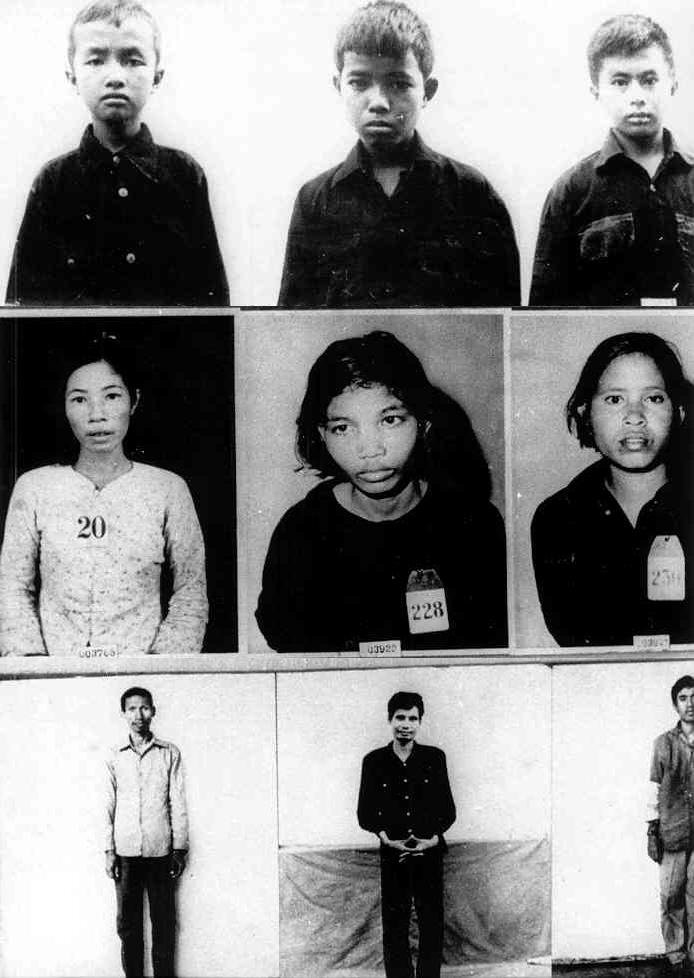
Victims of the Khmer Rouge security police, some of the million Cambodians slaughtered by Pol Pot's Communist regime – 1975
 Go on to the next section: A "More Moral" Carter
 |
